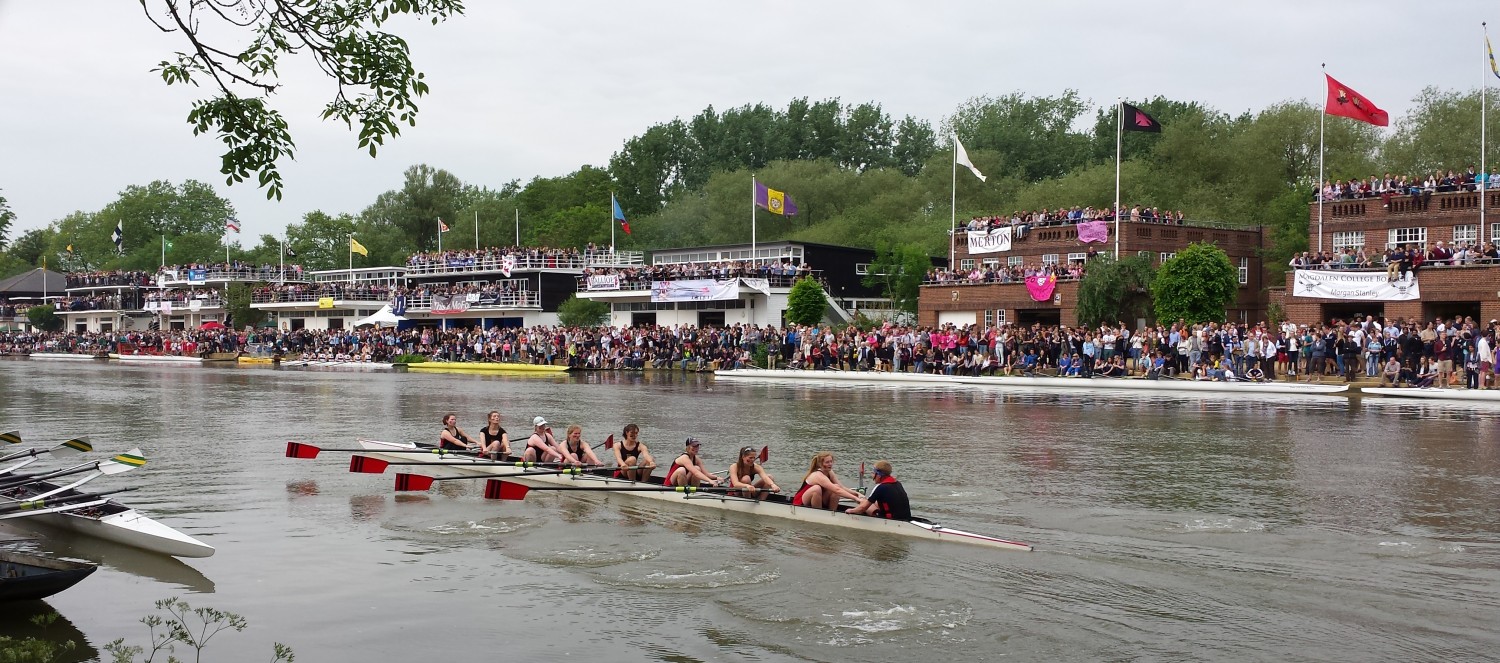Rowing – the way it was
I’ve been researching the history of bumps racing for an upcoming article and discovered some unexpected attitudes towards the rowers who first brought the sport into schools and universities here in the UK.
When we imagine the early days of public school* and university rowing around 1800, it is all too easy to take today’s opinions and project them on the past, but I discovered that the differences between then and now were far more profound than I imagined. Rowing was a means of transport and also a hard living for working-class boatmen. Students who were interested in rowing did not have their own boats and boathouses in those days. Boats had to be hired from boatyards (which were not usually in the best parts of town) and in addition, the danger of drowning was thought to be so great that rowing as a sport was generally banned by school authorities and the punishment for school students who were seen on the river was often a flogging.
Rowing as sport was seen as a disreputable and dangerous pastime and rowers seem to have been regarded in much the same way as today’s ‘joyriders’ who put the lives of innocent bystanders at risk by abusing the rules of the public highway. In those days rivers were indeed public highways, busy with traffic from dawn ’til dusk, and racing hired boats up and down crowded rivers was simple hooliganism as far as many reasonable people were concerned. If you imagine members of the school (or university) car club racing rented cars up and down local streets you get a sense of how rowers were seen. The fact that rowers tended to enjoy a few drinks before, during and after their outings probably did little to improve their image.
Money and economics being what they are, it is certainly the case that some of the wealthier school and university rowers traded up from renting to owning their boats and paying boatmen to keep and maintain them. For much of the first part of the 19th century, ‘college’ rowing at Oxford and Cambridge was as much between named boats as between colleges. Boats differed widely, seating anywhere between two and ten rowers and it was not considered remarkable that different types of boats would compete against each other in the same race.
The slowly increasing popularity of rowing at a few schools and universities from about 1815 onward saw an equally slow crystallization of formal, written rules and regulations as groups of friends formed clubs, clubs gradually gained recognition from schools and colleges and sporting competitions (on which significant sums of money could be won or lost) became regular events.
The first university Boat Race took place in 1829 and once established as an annual fixture, it undoubtedly helped to change attitudes across the country. Bumps racing, on the other hand, once established at Oxford and Cambridge universities, seems to have retained the somewhat reckless spirit of the early ‘sporting’ rowers. Perhaps for that reason it has remained a slightly bizarre footnote in the wider rowing world.
Look out for the article in Issue 4 of Row360 magazine.
*Public school is used here in the British sense – which refers to schools such as Eton and Westminster. In the US these would be described as private schools.
